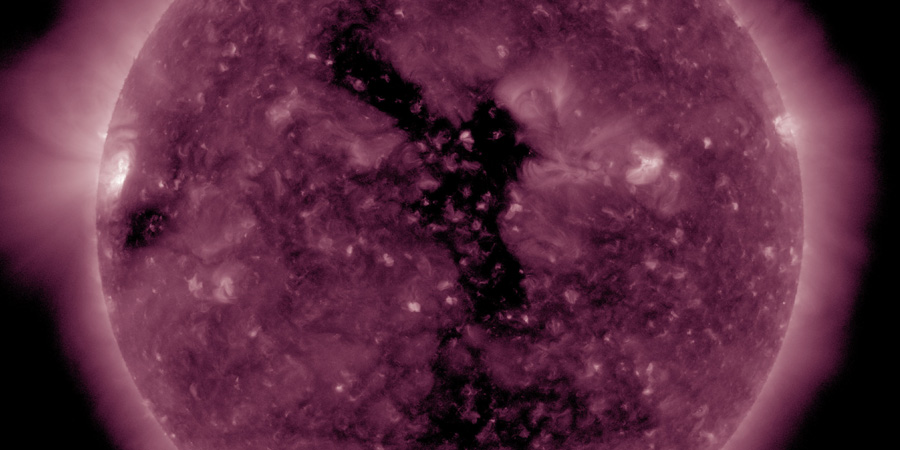Coronal hole faces Earth
Saturday, 13 May 2017 08:40 UTC

Space weather has been very quiet for weeks now. Solar activity has been very low (A and B-class activity only) ever since 19 April and the last geomagnetic storm was a long time ago as well: 23 April. There were pretty much no interesting space weather events to report since that time but today we finally have something interesting to report. It might not be the biggest news we have ever brought to you (literally) but we take anything at the moment! It is a small coronal hole that is facing our planet today and it is now sending an enhanced solar wind stream towards us which could spark some nice aurora in a few days from now.
A coronal hole is facing Earth. Enhanced solar wind could arrive in ~3 days - Follow live on https://t.co/T1Jkf6i4Cb pic.twitter.com/9ogfcyLs6U
— SpaceWeatherLive (@_SpaceWeather_) May 12, 2017
This coronal hole is no new solar feature, it was already present on our Sun during the previous solar rotation. It however cause minor geomagnetic storm conditions on 19 April and moderate G2 geomagnetic storm conditions on 20 April.
The coronal hole did change in shape during its trip around the far side of the Sun but it is still a trans-equatorial coronal hole so we should see a decent solar wind impact from it. The solar wind stream will likely take about 2 to 3 days to cover the Sun-Earth distance and from that we can conclude that minor G1 geomagnetic storm conditions on 16 May will be possible. The Moon might be an issue however as its still lit for about 78% on 16 May, which means weak aurora might be harder to spot. Nonetheless finally something to look out for, especially for our friends in the southern hemisphere where the nights are becoming longer and longer as we approach the June solstice.
Thank you for reading this article! Did you have any trouble with the technical terms used in this article? Our help section is the place to be where you can find in-depth articles, a FAQ and a list with common abbreviations. Still puzzled? Just post on our forum where we will help you the best we can!
Latest news
Latest forum messages
Support SpaceWeatherLive.com!
A lot of people come to SpaceWeatherLive to follow the Solar activity or if there is a chance to see the aurora, but with more traffic comes higher costs to keep the servers online. If you like SpaceWeatherLive and want to support the project you can choose a subscription for an ad-free site or consider a donation. With your help we can keep SpaceWeatherLive online!
Space weather facts
| Last X-flare | 2025/06/19 | X1.9 |
| Last M-flare | 2025/10/03 | M1.2 |
| Last geomagnetic storm | 2025/10/03 | Kp5 (G1) |
| Spotless days | |
|---|---|
| Last spotless day | 2022/06/08 |
| Monthly mean Sunspot Number | |
|---|---|
| September 2025 | 129.8 -3.7 |
| October 2025 | 140.1 +10.3 |
| Last 30 days | 131.3 -1.2 |





